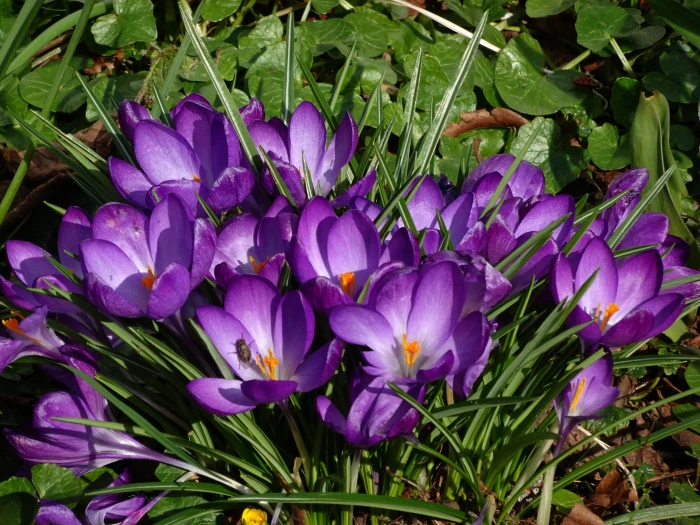Naples Crocus
(Crocus neapolitanus)
Naples Crocus (Crocus neapolitanus)
/
/

© Theivaprakasham Hari
CC BY 4.0
Image By:
© Theivaprakasham Hari
Recorded By:
Copyright:
CC BY 4.0
Copyright Notice:
Photo by: © Theivaprakasham Hari | License Type: CC BY 4.0 | License URL: http://creativecommons.org/licenses/by/4.0/ | Uploader: theivaprakashamhari | Publisher: iNaturalist |

























Estimated Native Range
Climate Requirements
| • Precipitation | 31" - 38" |
| • High Temp. | 66°F - 83°F |
| • Low Temp. | 17°F - 35°F |
Summary
Crocus neapolitanus, commonly known as Naples Crocus or Spring Crocus, is a perennial herb native to a range of habitats including grasslands, open woodlands, and alpine meadows in Italy and the Balkan Peninsula. It thrives on well-drained soils, often in calcareous substrates. This crocus species typically grows to a height and width of 0.1-0.3 feet (0.03-0.1 meters), forming clumps of grass-like leaves. The flowers are notably showy, with colors ranging from white to deep purple, and they bloom in early spring, often emerging through snow.
The Naples Crocus is valued for its early spring blooms, which provide a welcome splash of color after the winter months. It is commonly used in rock gardens, as a border plant, or naturalized in grassy areas. This crocus is relatively low maintenance, requiring only moderate watering. It prefers full sun to part shade and can adapt to a variety of soil types, including clay, loam, or sandy soils, provided they are well-draining. While generally free from serious pests and diseases, it can be susceptible to corm rot if planted in overly wet conditions. The Naples Crocus is also popular for forcing indoors, allowing gardeners to enjoy its blooms even in colder climates.CC BY-SA 4.0
The Naples Crocus is valued for its early spring blooms, which provide a welcome splash of color after the winter months. It is commonly used in rock gardens, as a border plant, or naturalized in grassy areas. This crocus is relatively low maintenance, requiring only moderate watering. It prefers full sun to part shade and can adapt to a variety of soil types, including clay, loam, or sandy soils, provided they are well-draining. While generally free from serious pests and diseases, it can be susceptible to corm rot if planted in overly wet conditions. The Naples Crocus is also popular for forcing indoors, allowing gardeners to enjoy its blooms even in colder climates.CC BY-SA 4.0
Plant Description
- Plant Type: Herb
- Height: 0.1-0.3 feet
- Width: 0.1-0.3 feet
- Growth Rate: Moderate
- Flower Color: White, Purple
- Flowering Season: Spring
- Leaf Retention: Deciduous
Growth Requirements
- Sun: Full Sun, Part Shade
- Water: Medium
- Drainage: Medium, Fast
Common Uses
Bee Garden, Border Plant, Fragrant, Groundcover, Low Maintenance, Potted Plant, Rock Garden, Street Planting
Natural Habitat
native to a range of habitats including grasslands, open woodlands, and alpine meadows in Italy and the Balkan Peninsula
Other Names
Common Names: Neapolitan Crocus, Spring Crocus
Scientific Names: Crocus neapolitanus, Crocus albiflorus subsp. neapolitanus, Crocus neapolitanus, Crocus purpureus, Crocus veluchensis, Crocus vernus, Crocus vernus subsp. neapolitanus, Crocus vernus var. grandiflorus, Crocus vernus var. neapolitanus
GBIF Accepted Name: Crocus neapolitanus